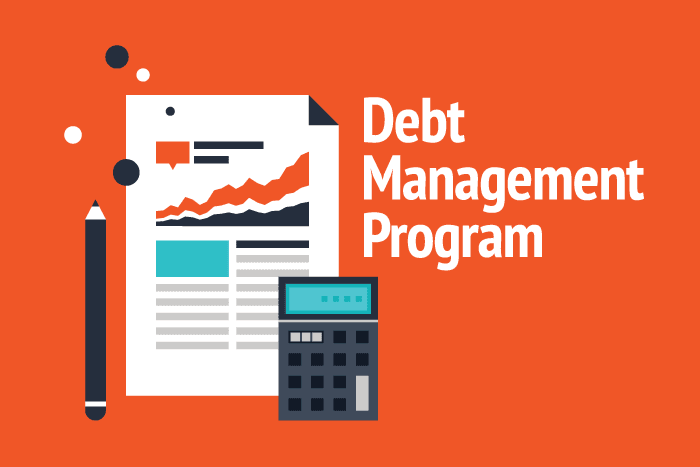Real-Life Success Stories of Financial Obligation Debt Consolidation: More Discussion Posted Here
Every Little Thing You Need to Find Out About Producing a Personalized Financial Debt Administration Strategy
In the realm of personal finance, devising a tailored debt monitoring plan is often the foundation of attaining economic stability and peace of mind. As you navigate the intricacies of developing a customized financial debt monitoring strategy, understanding the details of each step is crucial to your financial success.
Assessing Your Current Debt Scenario
One must first conduct an extensive evaluation of their current debt obligations before creating an effective debt monitoring plan. Produce a comprehensive checklist of each financial obligation, consisting of the complete quantity owed, rate of interest prices, minimum regular monthly repayments, and due dates.
After assembling this details, compute your overall debt-to-income ratio by separating your monthly debt settlements by your monthly revenue. This ratio is a vital indication of your ability to handle current financial debt degrees efficiently. Additionally, assess your credit scores report to determine any kind of mistakes or disparities that might be influencing your credit history. Comprehending these elements of your economic scenario will guide you in creating a customized financial debt management strategy customized to your details needs and goals.
Setup Financial Goals and Targets

When establishing economic objectives, it is necessary to be particular, measurable, achievable, pertinent, and time-bound (WISE) As an example, you might set a goal to repay a certain amount of debt within a details period, such as lowering your bank card balance by $5,000 in the following twelve month - More Discussion Posted Here. By setting clear targets similar to this, you can track your development and remain inspired to attain your financial debt monitoring goals
Additionally, take into consideration prioritizing your debts based on elements such as rates of interest, impressive balances, and payment terms. By concentrating on high-interest debts initially, you can save cash in the long run and increase your trip toward economic flexibility. Remember, everyone's financial situation is unique, so customize your targets and objectives to fit your specific requirements and situations.
Producing a Realistic Spending Plan
Crafting a distinct budget plan is a fundamental action in effective financial debt administration and financial preparation. A sensible budget plan acts as a roadmap for your economic wellness, helping you track your revenue, expenses, and financial obligation payments. To produce a functional spending plan, beginning by listing all your income sources. This includes your salary, side hustle earnings, or any type of other financial inflows. Next off, catalog all your repaired costs such as lease or home mortgage, energies, insurance coverage, and loan settlements. Variable expenditures like groceries, amusement, and transportation needs to also be included. Distinguish between requirements and wants to prioritize important costs and identify locations where you can reduce back.
Regularly evaluation and readjust your budget as needed to remain on track with your economic goals and financial debt payment strategy. By adhering to a realistic budget plan, you can successfully manage your debt and job in the direction of a much more protected monetary future.
Exploring Financial Debt Payment Approaches
After establishing a reasonable budget plan, the following important step in efficient financial debt management is to discover different financial debt settlement approaches. One usual approach is the snowball method, where you concentrate on paying off the smallest debts first while making minimum payments on larger financial debts. visit this page This method can assist build energy as you see smaller sized financial debts being removed, offering motivation to take on bigger ones.
An additional technique is the avalanche approach, which includes prioritizing debts with the highest possible rate of interest. By targeting high-interest financial obligations initially, you can minimize the total amount you pay in interest over time. This technique may be a lot more cost-efficient in the future, although it may take longer to see specific debts totally repaid.
Debt combination is another alternative where you incorporate several financial debts right into a solitary lending with a reduced passion rate. This can streamline your settlement process and potentially reduce the complete rate of interest paid. Nevertheless, it's vital to meticulously take into consideration the terms and costs connected with consolidation to guarantee it's the ideal choice for your monetary scenario.
Tracking and Readjusting Your Plan

Changing your plan might entail reapportioning funds to tackle high-interest debts first, working out with financial institutions for reduced interest rates or much better repayment terms, or checking why not check here out added revenue resources to quicken financial debt repayment. As your financial situation develops, your financial obligation administration strategy need to adapt appropriately to stay effective. By staying aggressive and adaptable in monitoring and readjusting your plan, you can maximize your efforts towards repaying your debts efficiently and accomplishing your economic goals.
Conclusion
Finally, producing a tailored debt More Discussion Posted Here administration strategy entails assessing current financial obligation, establishing monetary objectives, developing a practical budget, exploring payment techniques, and tracking and changing the strategy as needed. By following these actions, individuals can take control of their economic circumstance and work in the direction of becoming debt-free. It is essential to remain disciplined and dedicated to the plan in order to attain long-term financial security.
One have to first carry out a detailed examination of their current financial debt obligations prior to formulating a reliable debt monitoring plan.After developing a realistic budget plan, the following important step in efficient financial obligation management is to check out numerous financial obligation repayment strategies - More Discussion Posted Here.To properly manage your financial debt, continual tracking and adjustment of your financial obligation monitoring plan are important parts for long-term monetary security.Readjusting your strategy may include reapportioning funds to take on high-interest debts first, bargaining with creditors for lower rate of interest prices or better repayment terms, or checking out added revenue sources to speed up financial obligation settlement.In verdict, creating an individualized financial debt management plan includes assessing current debt, setting financial objectives, developing a realistic budget, exploring repayment strategies, and surveillance and readjusting the strategy as required